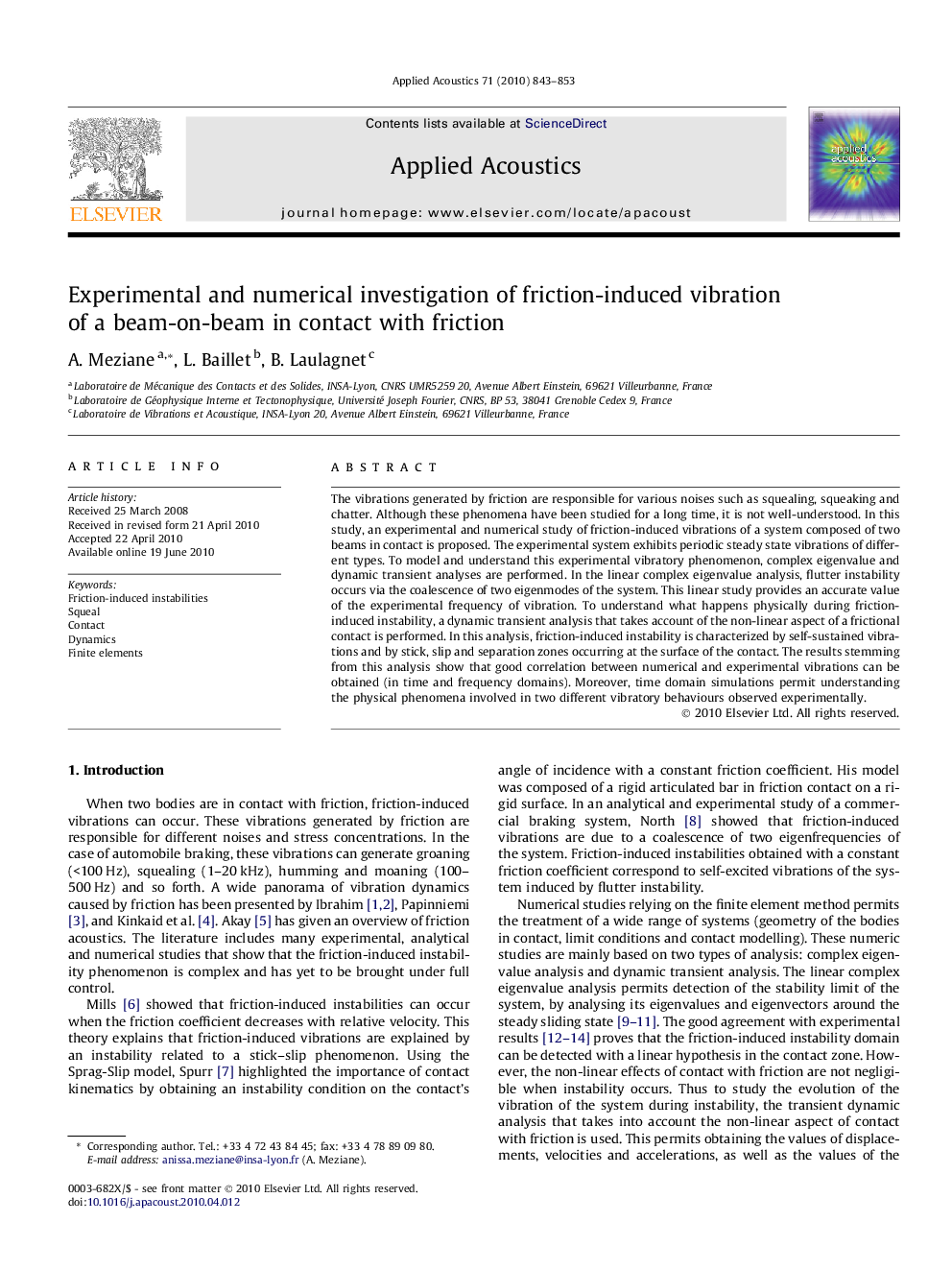| Article ID | Journal | Published Year | Pages | File Type |
|---|---|---|---|---|
| 755172 | Applied Acoustics | 2010 | 11 Pages |
The vibrations generated by friction are responsible for various noises such as squealing, squeaking and chatter. Although these phenomena have been studied for a long time, it is not well-understood. In this study, an experimental and numerical study of friction-induced vibrations of a system composed of two beams in contact is proposed. The experimental system exhibits periodic steady state vibrations of different types. To model and understand this experimental vibratory phenomenon, complex eigenvalue and dynamic transient analyses are performed. In the linear complex eigenvalue analysis, flutter instability occurs via the coalescence of two eigenmodes of the system. This linear study provides an accurate value of the experimental frequency of vibration. To understand what happens physically during friction-induced instability, a dynamic transient analysis that takes account of the non-linear aspect of a frictional contact is performed. In this analysis, friction-induced instability is characterized by self-sustained vibrations and by stick, slip and separation zones occurring at the surface of the contact. The results stemming from this analysis show that good correlation between numerical and experimental vibrations can be obtained (in time and frequency domains). Moreover, time domain simulations permit understanding the physical phenomena involved in two different vibratory behaviours observed experimentally.
